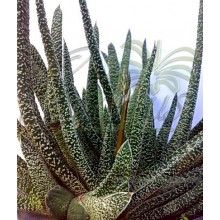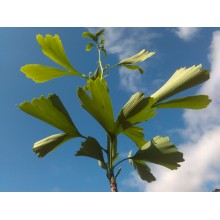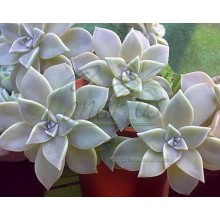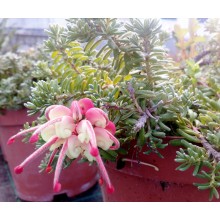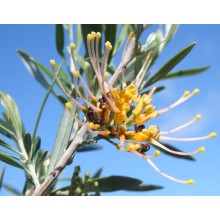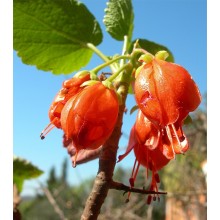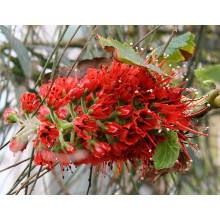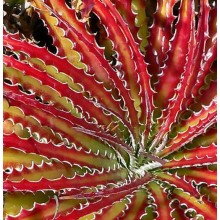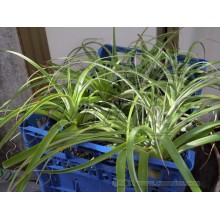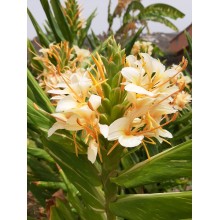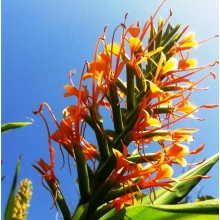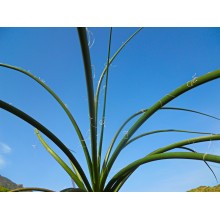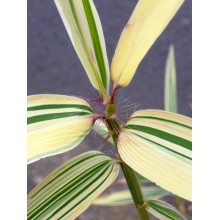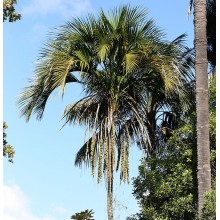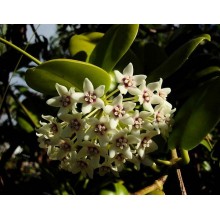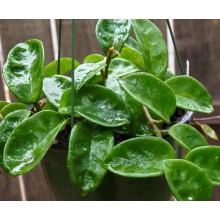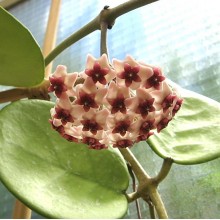Piante resistenti al freddo Ci sono 317 prodotti.

-
Gasteria carinata var. verrucosa
Gasteria carinata var. verrucosa
NEW ! - Rooted plant, h=10-12 cm. Variable subspecies. Leaves have abundant pearl-white tubercles. It is possibly the cold hardiest species in the genus Gasteria as it can withstand temperatures down to -7º C
10,90 € -
Ginkgo biloba
Ginkgo biloba
Ginkgo is a fabulous Asian tree, able to grow in cold temperate to subtropical climates. It is an excellent ornamental but it is also appreciated for its medicinal properties.
64,60 € -
Graptopetalum paraguayense
Graptopetalum paraguayense
Two unrooted heads 8-10 cm. Popular Mexican species with glossy pointed leaves ranging from pale blue gray to yellow pink. Suitable for pots, hanging baskets and in rock gardens. It can withstand frost to -3 or much more if kept dry.
10,50 € -
Grevillea lanigera 'Compacta'
Grevillea lanigera 'Compacta'
Spectacular dwarf selection of an everblooming Australian species. It makes a perfect flowering groundcover in sunny conditions but it is also great in rockeries or in pots as a fill-up plant. It originates in a harsh mediterranean climate and it is very adaptable ... let's say from -5 to 45C!
18,70 € -
Grevillea olivacea
Grevillea olivacea
This plant looks just like an olive tree ! It is a large shrub in the Protea family, native to a small area in W Australia. The silvery foliage is attractive and showy orange-pink inflorescences in winter to spring. It is resistant to harsh Mediterranean conditions and can take frost, wind, salt and drought.
23,00 € -
Greyia flanaganii
Greyia flanaganii
Densely branched shrub with exotic bell-shaped flowers, produced during 2 or 3 months in Spring. This rare endemic of Eastern Cape is far from common in cultivation but it is very resistant to drought and frost.
46,00 € -
Hechtia texensis
Hechtia texensis
A small, colourful frost-hardy terrestrial bromeliad. A gem for collectors!
28,20 € -
Hechtia tillandsioides
Hechtia tillandsioides
This is an unusual and elegant terrestrial bromeliad with spineless silvery leaves. Leaves are soft and velvety to touch. Established plants will bloom with huge "sprays" of pink flowers. Hechtia tillandsioides is native to Mexico (States of Hidalgo and Mexico). It takes frost and feels at home in Mediterranean climates !
21,50 € -
Hedychium coccineum 'Tara'
Hedychium coccineum 'Tara'
Cool-hardy ginger, with a particularly beautiful dense inflorescence, consisting of many, attractive, delicately scented orange-red flowers with striking stamens. Growth is quite upright and an adult clump can reach up to 2 m in height.
16,38 € 18,20 €Prezzi ridotti! -
Heliconia bourgaeana
Heliconia bourgaeana
This hard to find species is an excellent garden subject, suitable to non-tropical climates. It blooms in April to August in the Canary Islands. Bracts are solid, glossy purplish red, with bright yellow flowers inside.
48,00 € -
Heliconia schiedeana
Heliconia schiedeana
Cold-hardy heliconia native to the cool mountains of Eastern Mexico. Heliconia schiedeana has a bold, glossy light-green foliage, holding attractive red inflorescences in Summer or Fall. It is a must for any tropical garden in a non-tropical area.
38,80 € -
Heliconia x 'Pendulata Spotty Stems'
Heliconia x 'Pendulata Spotty Stems'
We selected this hybrid here in Tenerife. It is a particularly nice and hardy cross between Heliconia subulata and H. pendula, which are two cool-hardy species, good for the subtropics.
27,76 € 34,70 €Prezzi ridotti! -
Hesperaloe parviflora
Hesperaloe parviflora
Leaves are decorated by showy white, curly fibres on the margins. It clumps slowly and Long-lasting tall, red inflorescences appear in summer. Hardy to all types of conditions and it can take drought, and frost to about -20 C !
15,00 € -
Hibanobambusa tranquillans 'Shiroshima'
Hibanobambusa tranquillans 'Shiroshima'
This is one of the most beautiful variegated bamboos. It is elegant in all its parts as its large leaves are streaked in reach cream and diffuse pink tones. Despite its exotic look, it is hardy to about -18 C
36,20 € -
Howea belmoreana
Howea belmoreana
Elegant kentia palm from the Lord Howe Island. Howea belmoreana is the rarer sister of the enormously common "common kentia", Howea forsteriana, which is produced by millions units as the perfect house plant. Howea belmoreana is similar in many aspects but its leaves arch in the opposite sense and its segments point upwards.
46,50 € -
Hoya carnosa 'Krinkle 8'
Hoya carnosa 'Krinkle 8'
This select clone of the popular Hoya carnosa has some pecultiar beautifully crinkled, leaves, with regular bumps on dark green blades. It is also a prolific bloomer and umbels well placed on the foliage.
21,50 € -
Hoya obovata
Hoya obovata
This is one of the best Hoyas for Northern climates. Easy blooming and cool-hardy. It has beautiful round, glossy leaves and well shaped , long-lived, white blossoms.
18,70 €
Al momento ci sono pochi prodotti in questa categoria Piante resistenti al freddo
















